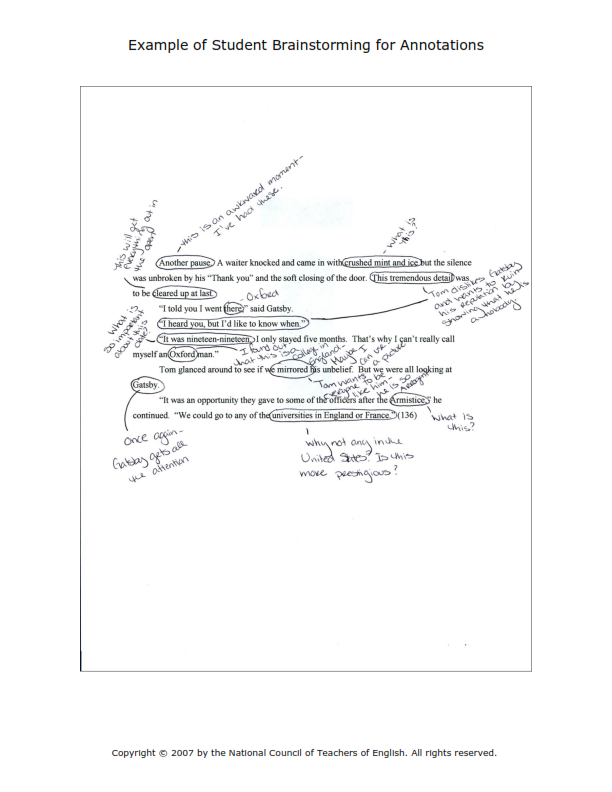annotate: Verb [-tating, -tated] to add critical or explanatory notes to a written work [Latin nota mark]
Part of growing as a reader, writer, and thinker required ACTIVE reading! There are two types of readers, active and passive. Passive readers just see what is on the page, where active readers get involved with the text! The key difference here is comprehensive, remembering, and understanding. When you actively read a text you take something away from the experience.
This year you will be actively reading texts from many different genres and styles. In order to participate in Literature Circles every week, part of your assignment will require an active reading of either a fiction or nonfiction text. Here’s how you complete a close reading:
As you work with your text, consider all of the ways that you can connect with what you are reading. Here are some suggestions that will help you with your annotations…
First, Decide on Your Method
• Write in the margins if you own the book.
• If you don’t own the book, sticky notes are good and can also easily be removed.
• Finally, you can write on a separate sheet of paper. Be sure to note the page number and passage you are referring to.
Here are some ideas for How to annotate:
- Define words or slang; make the words real with examples from your experiences; explore why the author would have used a particular word or phrase.
- Make connections to other parts of the book. Feel free to use direct quotes from the book.
- Make connections to other texts you have read or seen, including:
o Movies
o Comic books/graphic novels
o News events
o Other books, stories, plays, songs, or poems
- Draw a picture when a visual connection is appropriate.
- Re-write, paraphrase, or summarize a particularly difficult passage or moment.
- Make meaningful connections to your own life experiences.
- Describe a new perspective you may now have.
- Explain the historical context or traditions/social customs that are used in the passage.
- Offer an analysis or interpretation of what is happening in the text.
- Point out and discuss literary techniques that the author is using.
When you find some interesting literary techniques, try SIFTT Annotating
S – Symbols: A symbol is a literal thing that also stands for something else, like a flag, or a cross, or fire. Symbols help to discover new layers of meaning.
I – Imagery: Imagery includes words that appeal to one or more of the five senses. Close attention to imagery is important in understanding an author’s message and attitude toward a subject.
F – Figurative Language: Figurative language includes things like similes, metaphors, and personification. Figurative language often reveals deeper layers of meaning.
T – Tone: Tone is the overall mood of a piece of literature. Tone can carry as much meaning to the story as the plot does.
T – Theme: In literature, a theme is a broad idea in a story, or a message or lesson conveyed by a work. This message is usually about life, society or human nature. Themes explore timeless and universal ideas. Most themes are implied rather than explicitly stated.
Types of Annotation
• Questions and Answers
• Summary of Main Ideas
• Character Descriptions
• Possible Test Questions
• Patterns / Motifs
• Personal Connections to Text
• Explanations of Text
• Marking Important Passages

